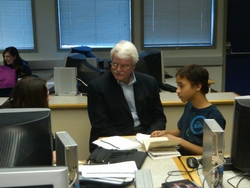Some East Harlem parents aren’t waiting to find out whether a charter school will move into their school building before organizing against the possibility.
Parents at the Manhattan East School for Arts and Academies recently got wind that the Department of Education was considering placing Harlem Success Academy 5, one of three new charters Eva Moskowitz plans to open next year, in their building. The plan would call for Manhattan East to move to another building across the street to create space for Moskowitz’s school.
The founding principal of Manhattan East, Jacqueline Ancess, said that the DOE did not tell the school that it could be moved; rather, the current principal and parents association head found out that a move was under consideration at an unrelated DOE meeting “by accident,” she said.
Ancess and the school’s parent association responded by sending out a letter yesterday asking parents and supporters to call the city’s information hotline today to ask the city not to relocate the school.
“Manhattan East is a very successful school,” the message urges parents to tell the city. “Moving Manhattan East from its home is unconscionable.”














 Overcrowded community colleges grappling with surging demand are beginning to turn to for-profit colleges for help.
Overcrowded community colleges grappling with surging demand are beginning to turn to for-profit colleges for help.









